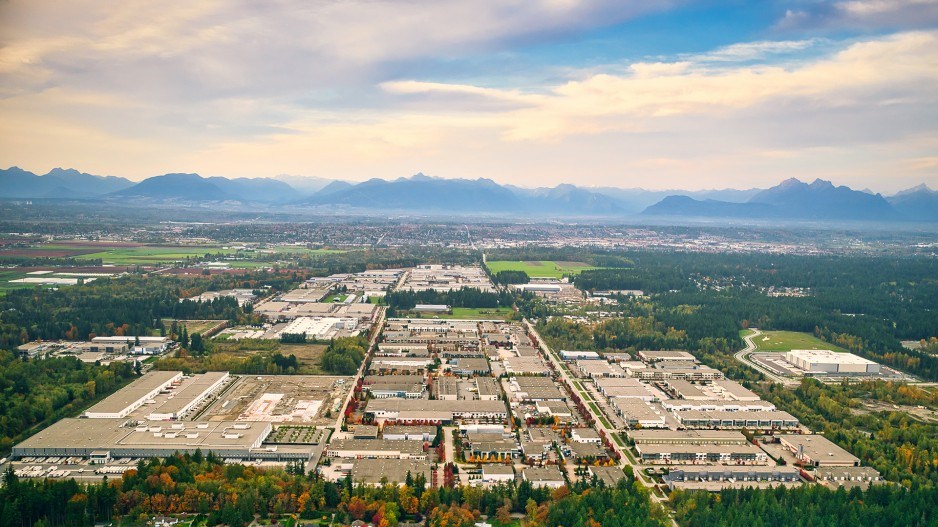A large tract of land in Surrey is one step closer to becoming a new industrial zone.
This comes after Surrey city council voted Dec. 16 in favour of a local area plan for the site, known as South Campbell Heights, concluding the planning process.
“The plan will guide growth and development in terms of land use, transportation and community amenities,” said the city’s website.
“Development applications consistent with the approved plan may now be considered in the area. Residents will continue to have an opportunity to comment on rezoning applications on a project-by-project basis through the development process.”
South Campbell Heights would be adjacent to Campbell Heights, a 798-hectare industrial and business park located in southeast Surrey along the city’s border with Township of Langley. Campbell Heights has its own local area plan.
South Campbell Heights would add 249 hectares between 20th Avenue and Eighth Avenue. Expected to be fully built , the plan has faced some opposition from the Semiahmoo First Nation and environmental groups, owing to its location near the Little Campbell River watershed.
This latest step forward for the land, located in the Cloverdale area, was praised by the Surrey Board of Trade (SBOT), which supported the plan’s approval in a Jan. 8 letter to Mayor Brenda Locke and the rest of council.
“The South Campbell Heights area represents a critical opportunity to address the region’s ongoing industrial land shortage, a growing concern for businesses seeking expansion, investment and job creation opportunities,” Indra Bhan, the board’s chief operating officer, wrote in the letter.
“The approval of this plan will provide much-needed industrial, commercial and employment lands.”
SBOT policy and research manager Jasroop Gosal told BIV that encouraging domestic manufacturing in the region’s industrial areas is more important than ever.
“Especially given the circumstances potentially with the U.S. where we may have 25-per-cent tariffs, we need to make sure that we are enhancing our ability to produce domestically, and so this isn’t only a Surrey or Metro Vancouver issue, it is a provincial and a federal issue as well,” he said.
Located near the Pacific Highway U.S. border crossing, South Campbell Heights is seen as an ideal location for manufacturing, and the creation and distribution of finished goods.
“Being a border city with the U.S. to our south, as well as ports and international airports surrounding us, Surrey is the prime location for the expansion of industrial land for the betterment of Metro Vancouver,” Gosal said.
Through the creation of new industrial hubs such as South Campbell Heights, Surrey can further cement its status as B.C.’s leader in manufacturing, he said.
“The city of Surrey actually has the [highest] number of manufacturers out of the entire province, so we are an economic powerhouse, punching well above our weight class,” he said.
Surrey city council’s Dec. 16 vote is the latest chapter in a years-long process.
Background studies first began in September 2014, followed by various steps including back-and-forth with the Metro Vancouver Regional District.
For example, in July 2021, to send proposed amendments to the South Campbell Heights Area Plan to Metro Vancouver for approval before rubber-stamping the new industrial area.
And in October 2021, Surrey's request to re-designate the South Campbell Heights land for employment purposes, paving the way for industrial uses.
Separately, Metro Vancouver released a report this past Dec. 30 quantifying the in the Vancouver region. The study found that despite representing four per cent of the land base, industrial lands account for 30 per cent ($43 billion) of the region’s GDP, as well as 22 per cent of total jobs.
Furthermore, activities on industrial lands in Metro Vancouver contribute $8 billion in municipal, provincial and federal tax revenue per year, the report found.





